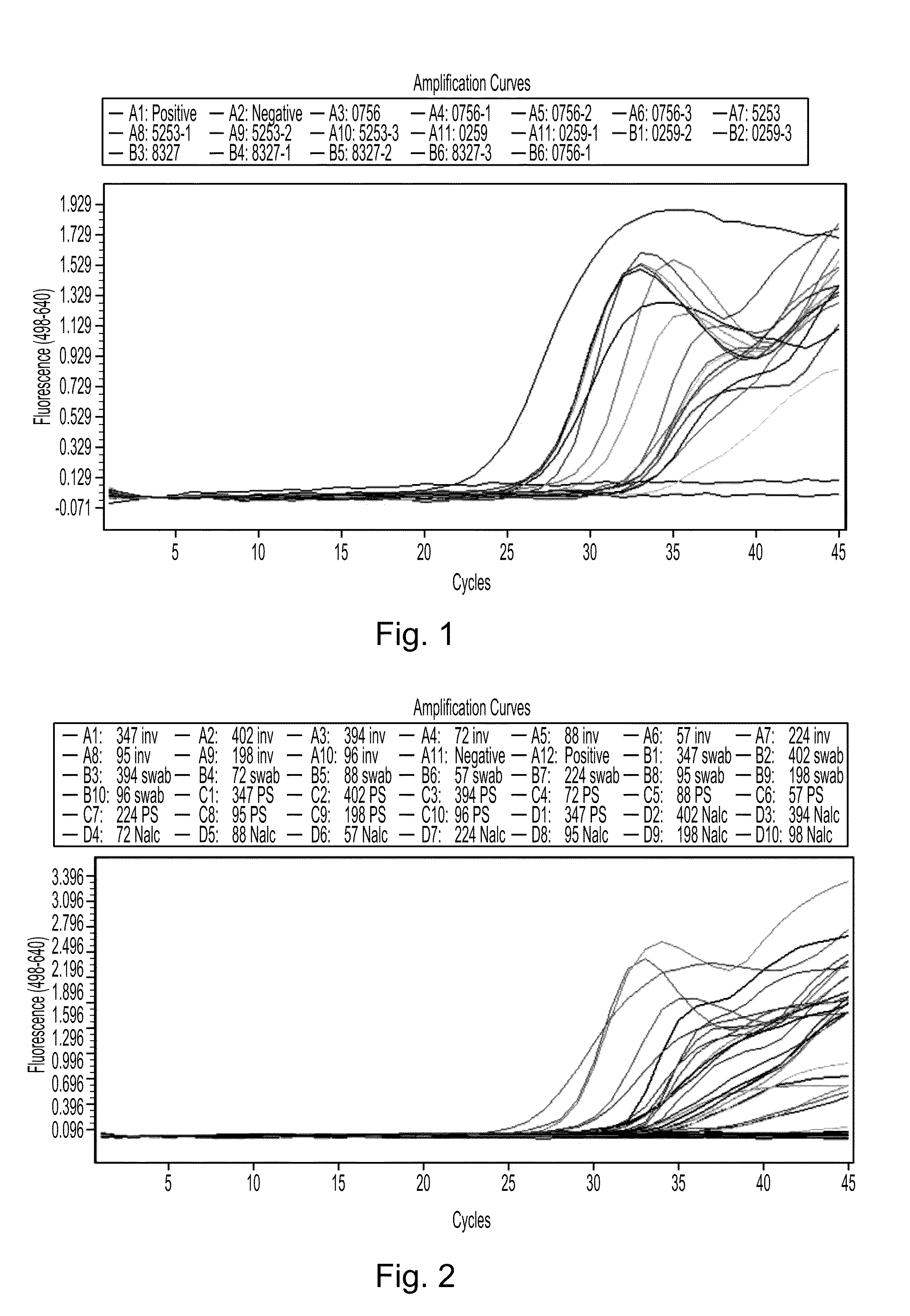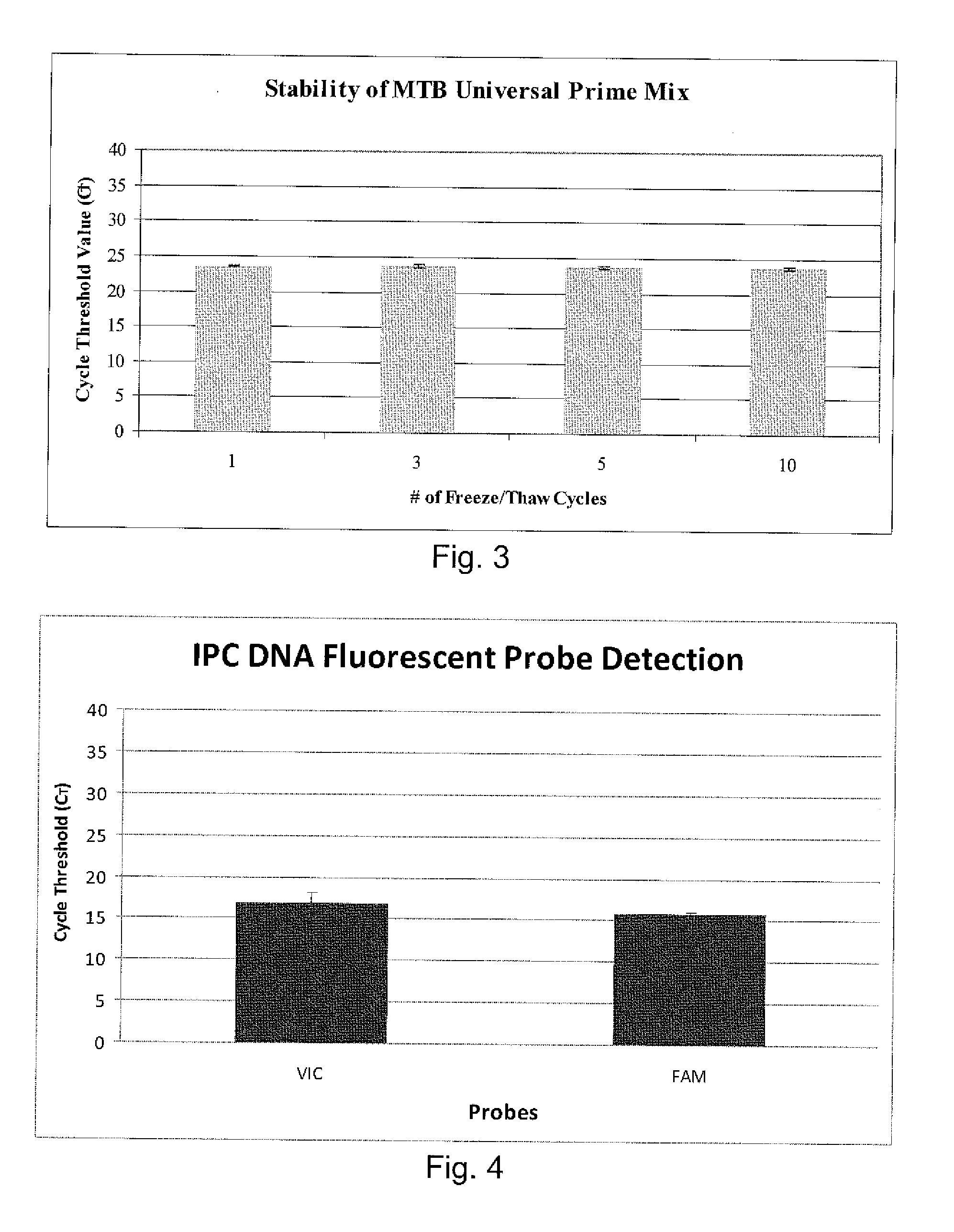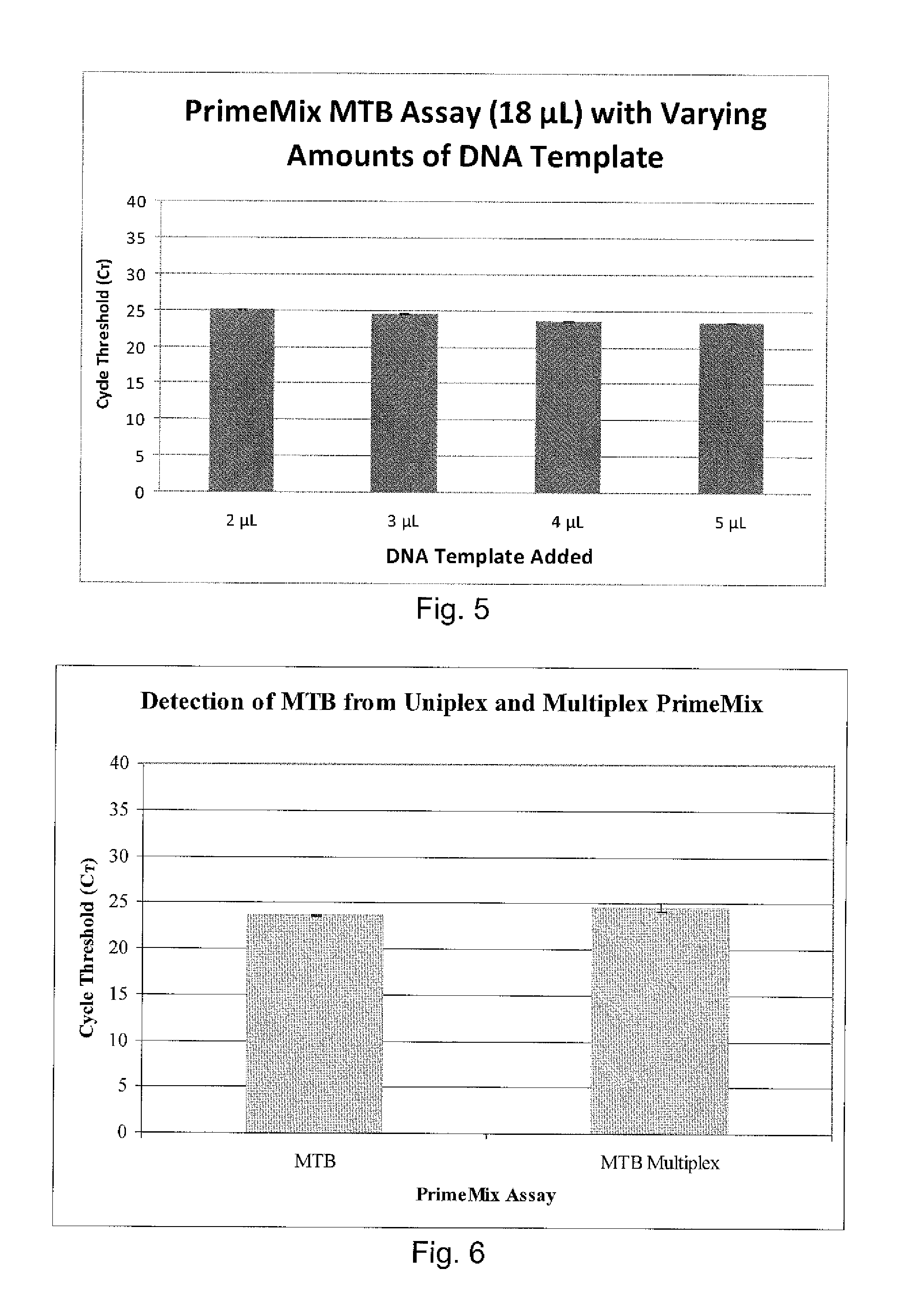Compositions and methods for detecting, identifying and quantitating mycobacterial-specific nucleic acids
a nucleic acid and mycobacterial technology, applied in the field of molecular biology and medical diagnostics, can solve the problems of poor patient compliance, ineffective treatment, and inability to detect, and achieve the effect of reducing the risk of infection, reducing the number of patients, and improving the quality of li
- Summary
- Abstract
- Description
- Claims
- Application Information
AI Technical Summary
Benefits of technology
Problems solved by technology
Method used
Image
Examples
example 1
Collection of Biological Samples, Nucleic Acid Extraction and Downstream Molecular Processing
[0275]In the practice of the invention, oropharyngeal, nasal, tracheal, and / or bronchial, samples of a subject suspected of having a tuberculosis infection are taken, typically in the form of sputum or lavage samples. This example describes the use of PrimeStore® (Longhorn Vaccines & Diagnostics, San Antonio, Tex., USA) (also described in detail in U.S. Patent Appl. Publ. No: 2009 / 0312285, which is specifically incorporated herein in its entirety by express reference thereto), a clinical or environmental sample collection system specifically formulated for downstream molecular diagnostic testing.
Materials and Methods
[0276]Four smear-positive sputum specimens obtained from a sputum bank (University of Pretoria, South Africa) with qualitative grading of +, ++ or +++, as observed by light microscopy, and differing viscosities were collected by having patients expectorate into a specimen cup. ...
example 2
Inactivation of Microbes in Tuberculin Samples Using PrimeStore®
Materials and Methods
[0280]To evaluate the degree of inactivation of tubercle bacteria within sputum samples when exposed to PrimeStore®, three studies were performed:
[0281]In the first study, a known MDR strain of M. tuberculosis was grown in MGIT® liquid based system (Mycobacteria Growth Indicator Tube, Becton Dickinson, USA). The isolate of the strain was acid-fast (AF) and smear-positive, and multi-drug resistance (MDR) was confirmed using a Line Probe Assay (Hain Lifescience GmbH, Nehreben, Germany). 0.15 mL or 0.5 mL inoculum of the known MDR tuberculosis strain was placed into 1.5 mL of PrimeStore® for either 2 or 10 minutes' incubation. Each solution was then vortexed, and further cultured in the MGIT® liquid based system, according to manufacturer's instructions. A control sample unexposed to PrimeStore® was also placed in the MGIT® liquid culture.
[0282]The second study placed known smear-positive sputum sample...
example 3
Storage, Nucleic Acid Extraction, Molecular Processing of Tuberculin Samples and Diagnosis of Tuberculosis
Materials and Methods
[0288]Sputum samples were processed using the same swabbing technique as described in Example 1, as well as using 1:1 ratios of PrimeStore® to sputum. The sputum samples used in these experiments were obtained from the sputum bank as before, and had been previously classified by both smear microscopy and culture results. All samples were initially characterized for acid fastness (i.e., by either +, ++, or +++ indicators on smear microscopy), and subsequently classified as either positive, negative or scanty for M. tuberculosis, by culture.
[0289]DNA was extracted from the sputum sample in PrimeStore® at various time points ranging from 6 days to 6 weeks. As shown in Table 4, the specimens in PrimeStore® were kept at ambient temperature for different periods of time before nucleic acid extraction was carried out. Extraction via QiaAmp® DNA Mini kit (Qiagen®,...
PUM
| Property | Measurement | Unit |
|---|---|---|
| temperature | aaaaa | aaaaa |
| temperature | aaaaa | aaaaa |
| temperature | aaaaa | aaaaa |
Abstract
Description
Claims
Application Information
 Login to View More
Login to View More - R&D
- Intellectual Property
- Life Sciences
- Materials
- Tech Scout
- Unparalleled Data Quality
- Higher Quality Content
- 60% Fewer Hallucinations
Browse by: Latest US Patents, China's latest patents, Technical Efficacy Thesaurus, Application Domain, Technology Topic, Popular Technical Reports.
© 2025 PatSnap. All rights reserved.Legal|Privacy policy|Modern Slavery Act Transparency Statement|Sitemap|About US| Contact US: help@patsnap.com



